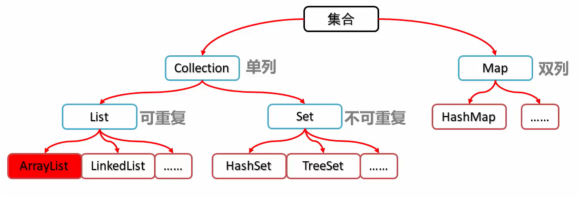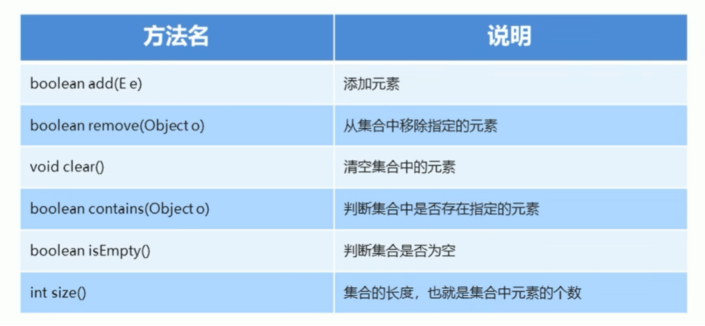一、集合类体系

二、Collection集合概述和基本使用
概述:1.是单列集合的顶层接口,它表示一组对象,这些对象也称为Collection的元素 2 JDK不提供此接口的任何直接实现,它提供更具体的子接口,如Set、List实现
创建方式:1.多态方式 2.具体的实现类ArrayList 例如:Collection<String> collection=new ArrayList<String>();
三、Collection常用方法

public static void main(String[] args) throws IOException {
//创建Collection集合对象
Collection<String> col=new ArrayList<String>();
//Boolean add(E e) 添加元素
col.add("张三");
col.add("李四");
//boolean remove(E e) 从集合中移除指定的元素
col.remove("李四");
//void clear() 清空集合中的元素
col.clear();
//bool contains(E e) 判断集合中是否存在指定的元素
col.contains("张三");
//boolean isEmpty() 判断集合是否为空
col.isEmpty();
//int size() 集合的长度
col.size();
for (String str :
col) {
System.out.println(str);
}
}
四、Collection集合的遍历
public static void main(String[] args) throws IOException {
//创建Collection集合对象
Collection<String> col=new ArrayList<String>();
//Boolean add(E e) 添加元素
col.add("张三");
col.add("李四");
//方式一
Iterator<String> it=col.iterator();
while (it.hasNext()){
System.out.println(it.next());
}
//方式二
Object[] objects=col.toArray();
for (int i=0;i<objects.length;i++){
System.out.println(objects[i]);
}
//方式三
for (String str :
col) {
System.out.println(str);
}
}